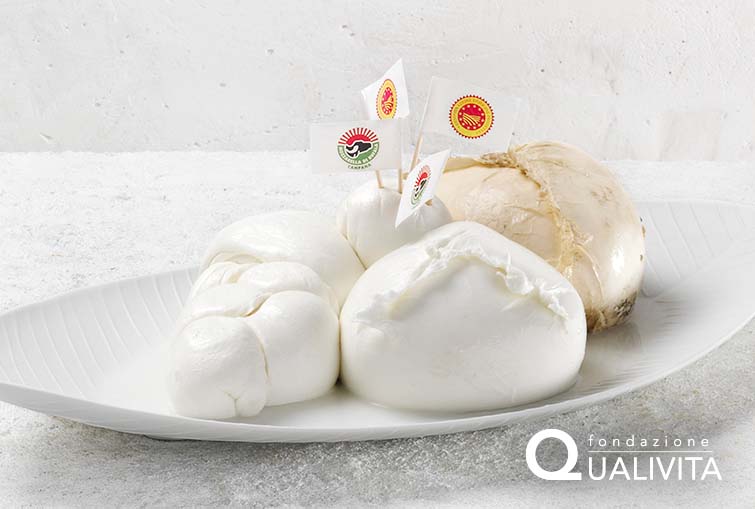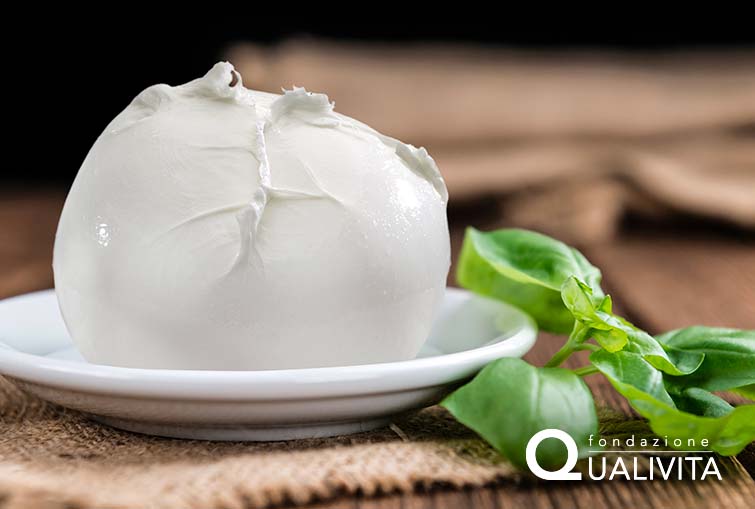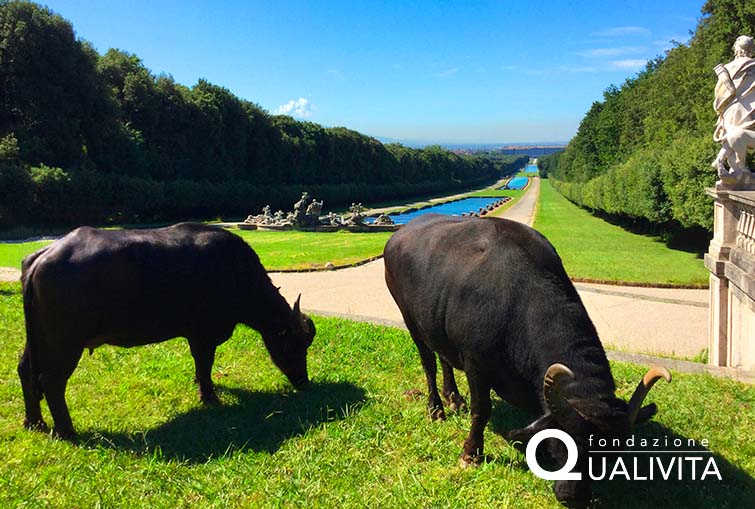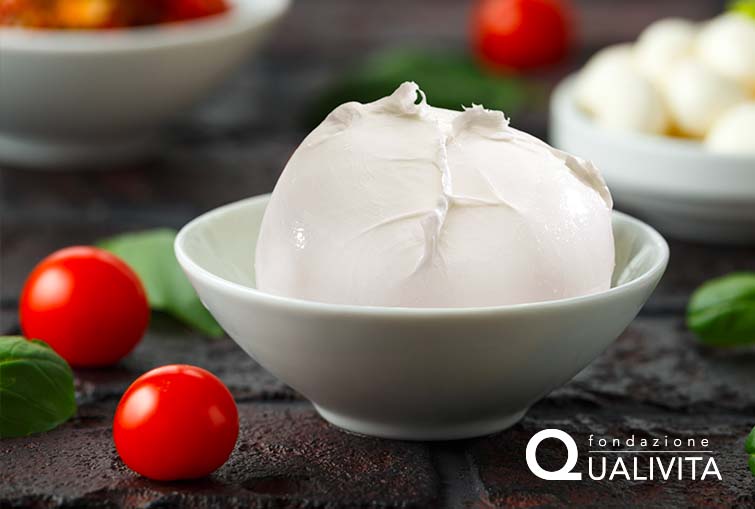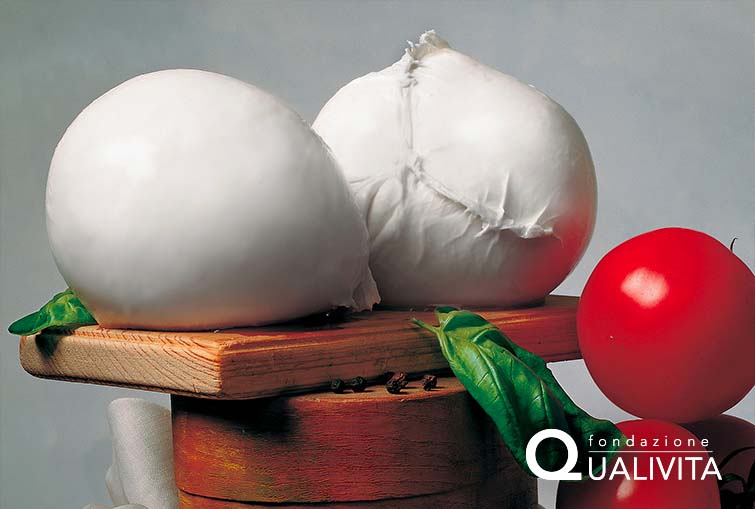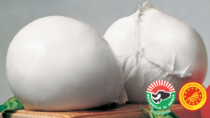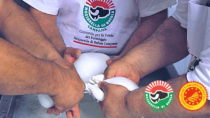Description
Mozzarella di Bufala Campana PDO is a fresh cheese produced with fresh milk obtained from buffalo belonging to the Italian Mediterranea breed.
Production Area
The production area of Mozzarella di Bufala Campana PDO is within the provinces of Caserta, Salerno and several municipalities in the provinces of Naples and Benevento, in the Campania region; several municipalities in the provinces of Latina, Frosinone and Rome, in the Lazio region; the municipality of Vefrano in the Province of Isernia, in the Molise region; several municipalities in the Province of Foggia, in the Apulia region.
Production Method
The milk is delivered to the dairies filtered, within 60 hours of milking, and then must be heated at a temperature of 33-36 °C. A natural whey starter obtained from the whey of the previous day’s production is added before curdling, which is carried out with natural calf rennet. The curd is broken twice with a wooden stick or a large metal whisk, until the grains are the size of a walnut. After ripening, the curd is then cut into strips and layered in special recipients. Water heated to 95 °C is added and the curd is spun and then divided into individual pieces of predetermined shapes and sizes. The pieces are immersed in cold water for several minutes before being placed in brine for salting.
Appearance and Flavour
Mozzarella di Bufala Campana PDO has a roundish shape, but other shapes are permitted (nuggets, braids, pearls, knots, small balls, oval). The weight varies between 10 and 800 g depending on the shape, and up to 3 kg for the braids. It is porcelain white and has an extremely thin skin and smooth surface. The cheese is made up of thin layers and has a slightly springy consistency for the first 8-10 hours after production, eventually becoming softer. It has a characteristic, delicate flavour, with a faint hint of musk; the smell is reminiscent of lactic acid fermentation.
History
The origins of mozzarella are linked to the introduction of buffalo into Italy. According to some, it was the Norman kings who brought the animals from Sicily - where they had been introduced by the Arabs - into Southern Italy, in around the year 1000. Others sustain that the buffalo is actually native to Italy, due to the discovery of fossils in the countryside around Rome and recent studies showing the phylogenetic diversity between Italian and Indian buffalo. However, the first evidence of “bufalare”, characteristic brick buildings where buffalo milk was processed to make provolone, ricotta and mozzarella, dates back to the 1600s. The consumption of buffalo cheeses spread significantly at the end of 18th century, also thanks to the fact that the Bourbon family established the first buffalo farm within the grounds of the Royal Palace of Carditello in the San Tammaro countryside, in the Province of Caserta.
Gastronomy
Mozzarella di Bufala Campana PDO should be kept in a cool place, inside a glass or ceramic recipient with the liquid it is sold in. If kept in the refrigerator, it should be taken out beforehand and eaten at room temperature. It is generally eaten fresh, but it can also be used as an ingredient in numerous dishes, including Pizza Napoletana TSG; when used in cooking, the mozzarella should be removed from its liquid and left in the refrigerator for several hours before use, so as to remove any excess liquid.
Marketing
The product is marketed as Mozzarella di Bufala Campana PDO, with the possible addition of the word “Affumicata” (smoked), depending on the production process used. It is sold pre-packed in heat-sealed bags, tubs and glass jars.
Distinctive Features
The distinctive organoleptic properties of Mozzarella di Bufala Campana PDO are linked both to the particular characteristics of the buffalo milk, obtained from animals reared in the PDO area, and the particular native microbial flora of the "cizza", natural whey starter from the previous day's processing.





